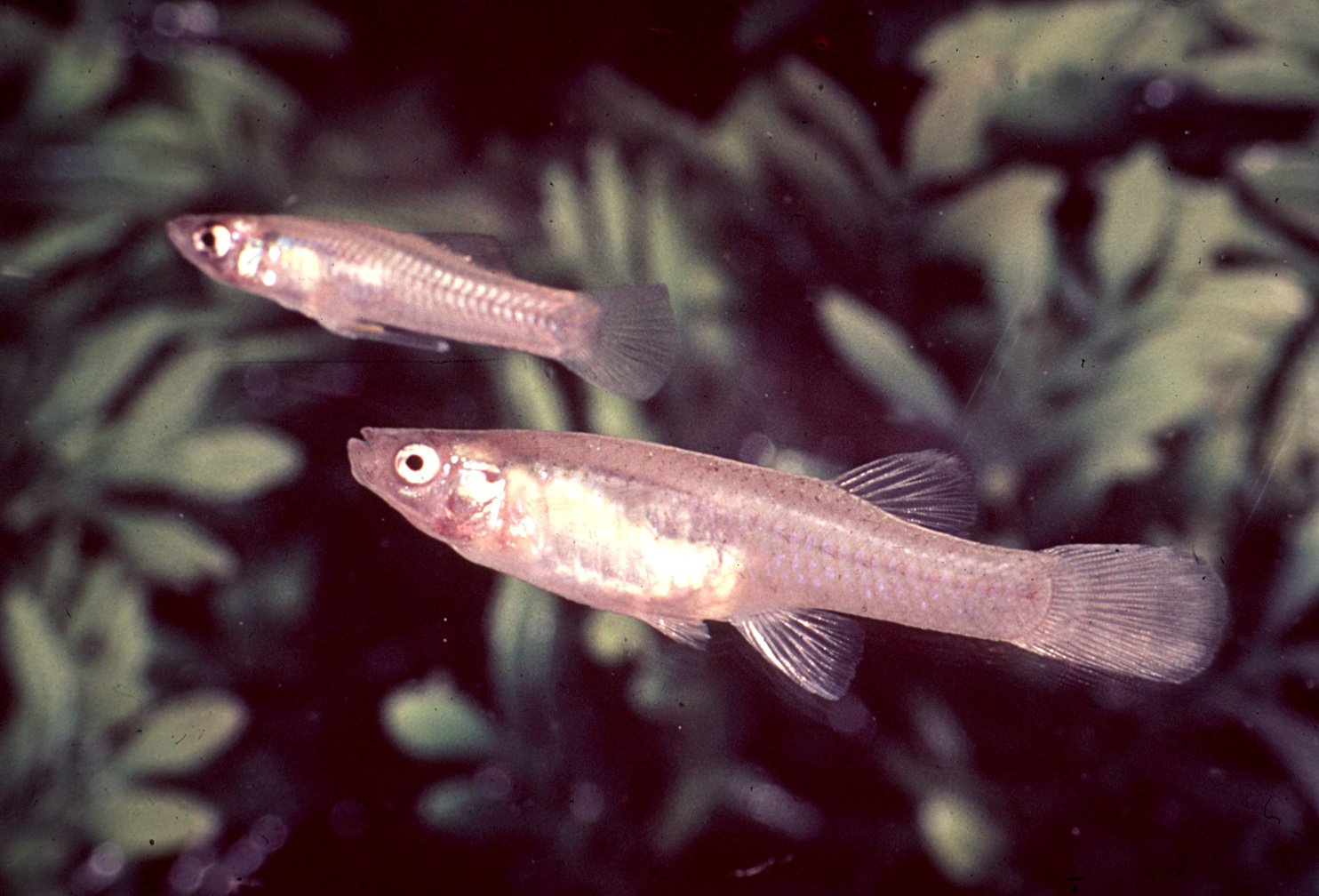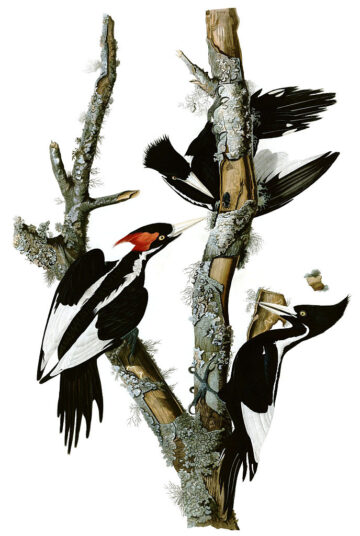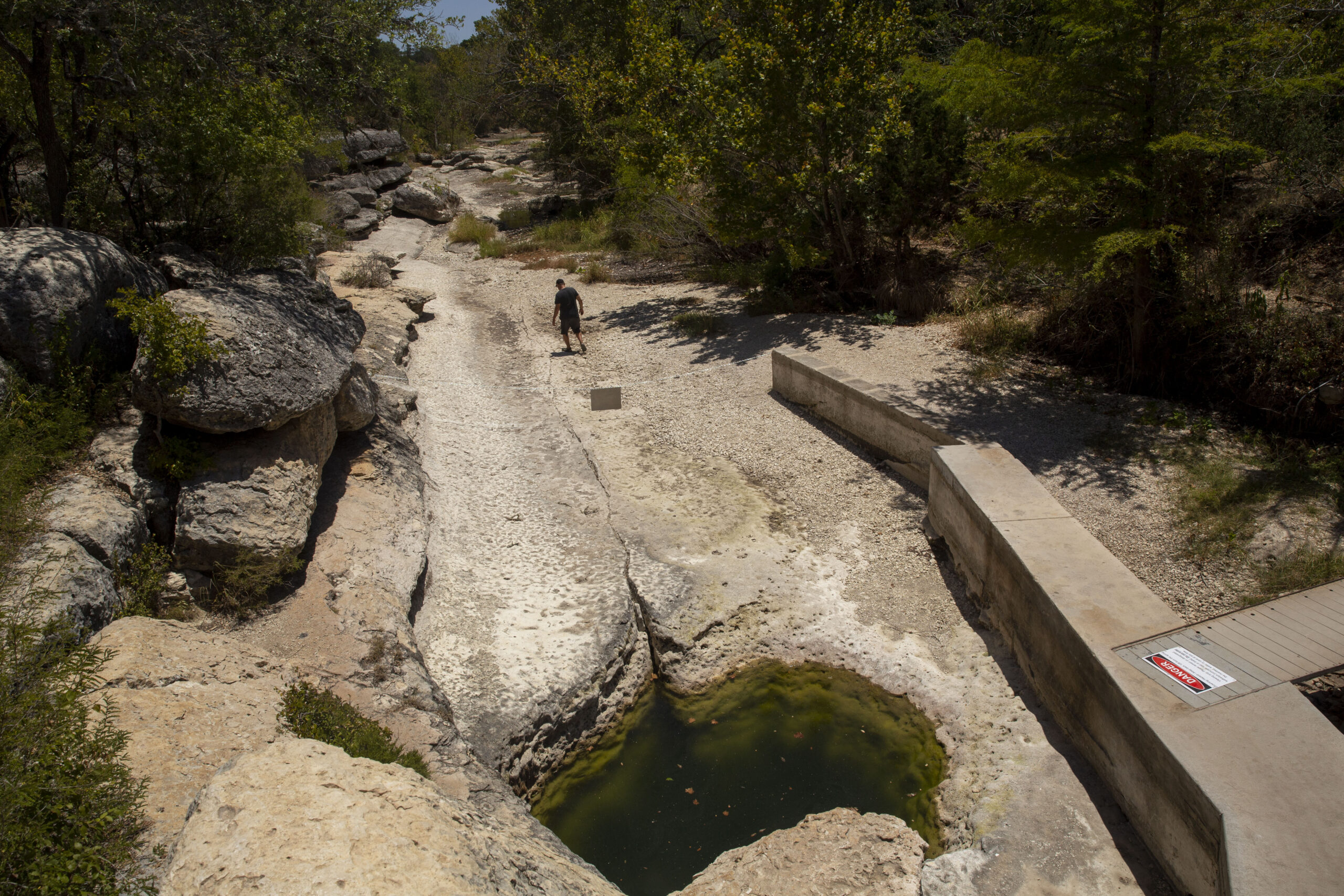
Going Extinct in Texas
Declaring an endangered species officially gone can take decades.

Above: One of very few surviving photos of the San Marcos gambusia
No one has reported seeing a San Marcos gambusia fish since Michael Jackson’s “Beat It” was at the top of the musical charts. This fall, the U.S. Fish and Wildlife Service (FWS) decided that was long enough to wait to declare the 2-inch mosquito-eater officially extinct.
Getting a species declared extinct, it turns out, is tough. In Texas and nationwide, there are many plant and animal species that haven’t been seen in decades but still have not been delisted.
Extinction questions involve a lot of science and, often, a lot of human emotions—especially when someone sights a plant or animal that was thought to be extinct. “You have these very hardened researchers literally shaking or breaking down into tears,” said Tania Homayoun, an ornithologist with the Texas Parks and Wildlife Department (TPWD). “There’s a lot wrapped up in it when you let yourself process what that means, to be in the presence of something that is almost gone from the planet.”
“There’s a lot wrapped up in it when you let yourself process what that means, to be in the presence of something that is almost gone from the planet.”
An extinction decision means that federal and state protections and conservation funding are removed for the species, so it’s done with great caution. Reported sightings of species that had been missing for a long time are hard to verify, but they can be enough to keep a species from being “delisted” as extinct.
One reason for the hesitancy to declare a species extinct is that there isn’t enough funding to frequently sample—find and count—the species. In Texas, 1,300 species have been designated as “rare or in danger of declining,” and an additional 240 are listed as endangered or threatened. In many cases, especially with plants, conservation experts trying to find rare or endangered species may be relying on sightings from years ago, before GPS coordinates were available. They often need to go onto private land, perhaps at certain times of the year, to find and count a plant species, and they don’t always get permission to do it.
A plant “may only occur on one specific type of limestone … at the edge of a seep. … They may only come up after three inches of rain in July,” said Michael Eason, the botanist in charge of the rare plant collection at the San Antonio Botanical Gardens. “A lot of these places are really difficult to get to.” Even Big Bend National Park, which many people consider remote, rough, and inaccessible, is easier to navigate than some of the places researchers need to access on private land. For most of the landowners he works with, Eason said, it’s a source of pride to find out their property harbors rare plants. “Just them knowing that they have that on their property allows them to protect those areas.”
Unsurprisingly, Texas agencies focus first on endangered or threatened species that are endemic to Texas—that is, only found here.
In the case of the tiny San Marcos gambusia, University of Texas at Austin ichthyologist Robert Edwards began studying the little fish almost as soon as it was scientifically described in 1969. Even then, it was threatened by dropping water levels, pollution, and manmade changes to its environment. And it prospered only in a narrow range of water temperatures. He successfully bred it in his lab in the late 1970s. But when he sent that batch to a New Mexico fishery that specialized in breeding endangered species, the gambusia died during their first too-cold winter. After that, Edwards went back to the San Marcos River and found three males and one female of that species but could never get them to reproduce. By 1983, the San Marcos gambusia appeared to be gone.
The unique San Marcos River ecosystem and its plants and animals have been well studied, particularly since the 2012 founding of The Meadows Center for Water and the Environment. But with Texas’ 191,000 miles of waterways, sometimes there is no way to say for sure that certain species no longer exist in the wild.
Reported sightings of a species that may be close to extinction or have even been declared extinct make for drama in the conservationist world—and sometimes beyond it. The hunt for the ivory-billed woodpecker, whose range included Texas, has been the subject of at least two books, a documentary, and a comedic film.

Petitions have been filed for years with FWS to delist the ivory-billed woodpecker due to extinction. The bird requires an old-growth bottomland riparian habitat—the more isolated and swampier a forest, the better—making it hard to lay eyes on. The last confirmed sighting of the bird was in Louisiana in 1944—and it was listed in 1967 as endangered, but it still has not been declared extinct.
“One of the last photos that was taken was a female at her roost site, and in the background is the forest that has been clear-cut around her,” Homayoun, the TPWD ornithologist, said. Since then, qualified scientists and birders have reported multiple unverifiable sightings, by ear or by sight. “How do you make a decision about what the status of this bird is when even the people who are the experts can’t necessarily agree on the evidence that’s being put forward for its very existence?”
Another bird high on the “missing” list in Texas is the Eskimo curlew. The bird used to migrate in flocks through Texas but when prairie habitat vanished, so did the Rocky Mountain grasshopper, the curlews’ favorite food on its northward migration from Argentina to northwestern Canada. Homayoun said there are likely fewer than 50 Eskimo curlews left, but occasional reports of sightings still come in, so the species remains “endangered.”
Victor Emanuel, a famous birder referred to by Texas Monthly as the “Birdman of Texas,” recounted what it was like to see an Eskimo curlew in a plowed field on Galveston Island in 1963 when it hadn’t been sighted since 1945. “For a birdwatcher to see a bird that’s extinct, is not quite like seeing a dinosaur, but is like seeing something from way time past,” he said.
“Every time we lose a species, we lose so much. We lose so many stories.”
The loss of a single species may seem a small matter in a state with an estimated 76,000 species of flora and fauna. But Homayoun said that in the bigger picture, even the small and unloved species count, like the grasshoppers, whose fate may in turn have doomed the Eskimo curlew.
“Every time we lose a species, we lose so much. We lose so many stories,” she said. The bird she misses the most is one that even her parents never had a chance to see or hear. It’s the Carolina parakeet that lived in the southeastern United States, where Homayoun grew up. The bird with a bright green body and yellow and red head died out in 1918 for several reasons, including the market for its feathers, sought after for use in women’s hats.
“I look back, and I think I should have had that experience of watching and hearing those birds through my childhood,” she said. “None of us that are here had that experience.”



